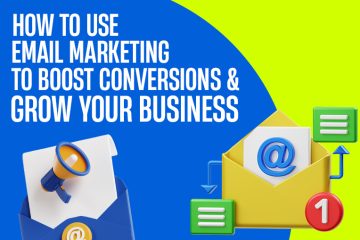In today’s highly competitive digital world, mastering SEO is crucial for ensuring your website ranks well and attracts quality traffic. Businesses looking for an SEO edge often rely on professional services like a SEO agency in Delhi to gain a competitive advantage. While off-page SEO tactics such as backlinks are important, on-page SEO factors are equally significant. On-page SEO focuses on optimizing elements directly on your website, from content to technical aspects. Here’s a guide on the ten essential on-page SEO factors that can yield fast results.
What Is On-page SEO?
On-page SEO refers to all the techniques and optimizations applied directly to a website to improve its search engine rankings. Unlike off-page strategies like link building, on-page SEO involves working with factors you can control. These include content, meta tags, URLs, and overall site architecture. By focusing on these elements, you make it easier for search engines to crawl and index your pages.
1. Title Tags and Meta Descriptions
The title tag is one of the most critical factors in on-page SEO. It appears in search engine results and should accurately describe the page’s content while including the focus keyword. For example, if you’re targeting the keyword SEO agency in Delhi, it should appear in the title.
Similarly, meta descriptions provide a brief overview of the page’s content. While they don’t directly influence rankings, well-crafted meta descriptions can increase your click-through rate (CTR). Focus on writing engaging and compelling meta descriptions that entice users to click through to your page.
Example:
- Title Tag: “Top SEO Agency in Delhi | Boost Your Online Presence”
- Meta Description: “Looking for the best SEO agency in Delhi? DI Infotech offers SEO services to improve rankings and drive more traffic.”
2. Content Quality and Relevance
Content remains a significant ranking factor for SEO. High-quality, informative, and engaging content is key to holding user attention and reducing bounce rates. Ensure that your content is written for the user first, not just search engines. It should answer the queries your audience is searching for, providing value at every level. For instance, when targeting the best SEO company in Delhi, write informative content that highlights the benefits of SEO and provides actionable insights.
Remember to integrate keywords naturally throughout your content but avoid keyword stuffing, which can lead to penalties from search engines.
3. URL Structure
A clean and readable URL structure contributes significantly to better SEO rankings. Keep URLs short, descriptive, and keyword-rich without making them overly complex. They should give the user and search engines a clear idea of what the page is about.
For instance, a URL like https://www.diinfotech.com/seo-agency-in-delhi/ is clear and informative compared to something like https://www.diinfotech.com/seo123agency45.
4. Heading Tags (H1, H2, H3)
Properly formatted heading tags help both users and search engines understand your content. The H1 tag should only be used once on each page and must clearly state the page’s main topic, ideally including the primary keyword. Subheadings (H2, H3) break down content into readable sections and guide users through the information logically.
For example:
- H1: “10 Essential On-page Factors For Fast Impact in SEO”
- H2: “What is On-page SEO?”
- H3: “Importance of Structured Headings in SEO”
5. Mobile Responsiveness
With the majority of users now accessing websites from mobile devices, it’s imperative to ensure your site is mobile-friendly. Google has adopted a mobile-first indexing approach, meaning websites optimized for mobile will rank higher. Ensure your website’s layout adapts well to different screen sizes and remains easy to navigate on mobile devices.
A SEO agency in Delhi can help you test and optimize your site for mobile responsiveness, ensuring users have a seamless experience.
6. Image Optimization
Images can significantly enhance a user’s experience on your website, but they need to be properly optimized to contribute positively to SEO. Compress images to ensure they don’t slow down your website’s loading speed, and include descriptive filenames and alt text that relate to the image. Use relevant keywords in the alt text to help search engines understand the content.
For example, instead of using IMG1234.jpg, use a descriptive filename like SEO-services-in-Delhi.jpg.
7. Page Speed and Performance
Page speed has a direct impact on both user experience and SEO rankings. Websites that load quickly offer a better user experience, which in turn leads to higher engagement and reduced bounce rates. Tools like Google PageSpeed Insights can help you identify areas to improve your website’s speed.
Common fixes include compressing images, reducing server response times, and using browser caching. A fast-loading site will not only improve SEO but also keep users on your page longer.
8. Internal Linking
Internal links are crucial for directing users to other relevant content within your website. They help reduce bounce rates and encourage visitors to explore more pages, increasing engagement. Internal links also distribute “link juice” throughout your site, helping improve the SEO value of important pages.
For instance, linking to related services like the best SEO company in Delhi from an informative blog post boosts the visibility of that service page.
9. Schema Markup
Schema markup is a powerful yet underutilized on-page SEO tactic. It helps search engines better understand your content and present it more attractively in search results. Rich snippets, such as reviews or FAQs, can make your listing stand out, increasing the chances of users clicking on your page.
You can implement schema for products, services, events, or FAQs to give search engines additional context about your content.
10. User Experience (UX)
User experience plays a central role in SEO. A well-structured, easy-to-navigate website keeps users engaged and encourages them to spend more time on your site. Factors like clear navigation menus, a well-organized layout, and fast-loading pages all contribute to a positive user experience.
Search engines favor sites that provide a great user experience, rewarding them with higher rankings. Make sure users can easily find what they’re looking for, and use clear CTAs (Call to Actions) to guide them to conversion points.
Conclusion
Optimizing your website for on-page SEO can have a fast and significant impact on your search engine rankings. From title tags to internal linking, focusing on these ten essential on-page factors will help your business stay ahead in a competitive market. By partnering with the best SEO company in Delhi, you can implement these strategies effectively and see lasting results. Whether you’re enhancing your site’s mobile experience or creating a solid internal linking structure, prioritizing on-page SEO will lead to better rankings, increased traffic, and more conversions.





0 Comments